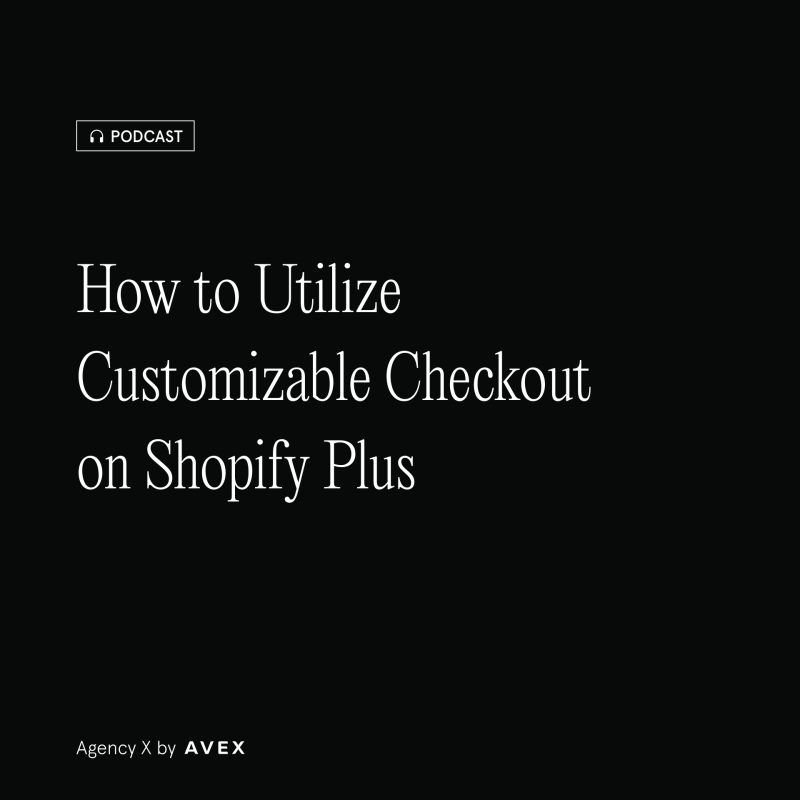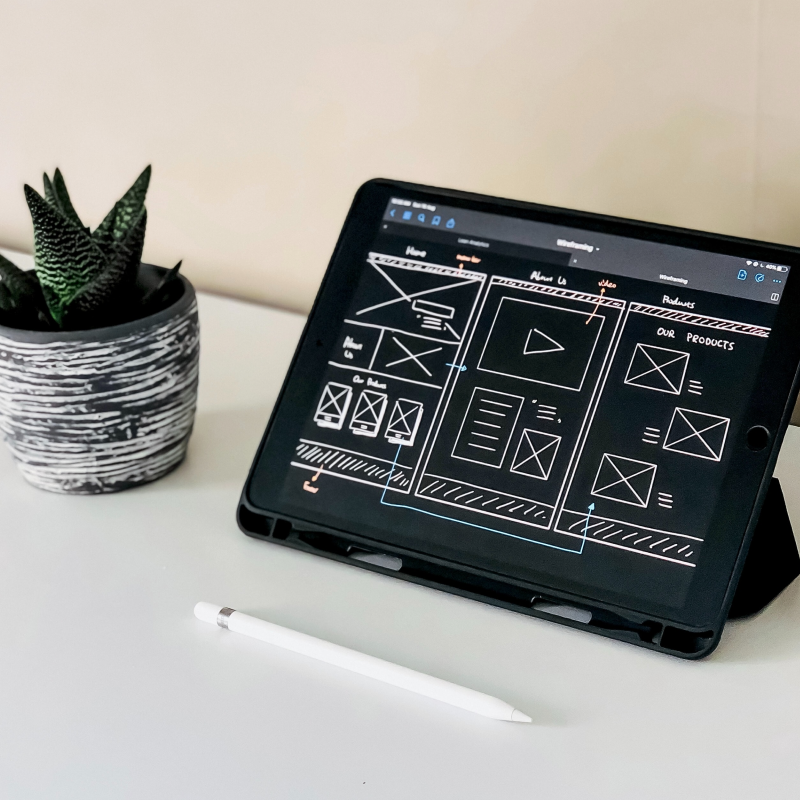6 Best Practices for Ecommerce Product Pages

Quick Summary Every eCommerce store owner knows the importance of increasing conversion rates. An appealing product detail page (PDP) should capture the image of your brand and should turn website visits into actual sales.
When a customer lands on your PDP, you have limited time to make a first impression. Your eCommerce product page plays a significant part when influencing your potential customer's buying behavior.
As an online store owner, you need to consider many elements when creating the ideal shopping experience for your online store. There are various strategies and best practices you can adopt to boost your store's conversion rate. They will influence the decisions of your visitors and hopefully make them return customers.
What Are eCommerce Product Pages?
A PDP is a web page that features information about a product. It helps to convert visitors to your site into buyers. A well-designed PDP should be information-driven to help visitors consider purchasing a product. It should also initiate actions, such as add-to-cart or checkout, from the buyer's end.
PDPs are essentially the backbone of eCommerce sites. They help to inform visitors about details like measurements, colors, product instructions, and materials, passing on critical information to shoppers.
An effective product detail page should increase conversion rates (which is the ultimate business objective of any online store). As an eCommerce store owner, it’s beneficial to know that focusing on revamping your PDPs might bring you more sales than you would think.
What Are the Features of a Product Detail Page?
Customers should find all the information they require on your PDP to convince them to proceed with a purchase. Some of the features of a well-designed product detail page include the following.
Copy Explaining the Product
When a visitor gets to your PDP, they should see the product title. It's essential to have a title that talks explicitly about the product on your PDP while reeling the site visitor in. The title should be clear, truthful, and detail what the customer may be looking for. Avoid generic titles for your web page, and continue to use SEO best practices when creating your titles.
A well-designed PDP page should also have a short product description. While brevity is better, the product description should cover the features and benefits of the product. You may require top-notch eCommerce copywriting skills to create an eye-catching yet informative product description. It should be appropriate to the product and the branding of your company.
Price and Size Details, Along With CTAs
Price is an important (and obvious) factor for any eCommerce product page. It should be displayed clearly for prospective customers to see immediately when they access the web page—making it hard to see will cause your site visitor to lose trust in your brand. You may also include available discounts or offers in the product details.
The price of a product should always be close to the call to action (CTA). It should be positioned next to the "add to cart" or "buy now" button. Your CTA should be striking yet not overwhelming to the customer.
Imagery of Product
Your prospective customers should see high-quality photos for them to make informed decisions. Make sure you’re including photographs of your products from various angles, allowing shoppers to have a better context of your products. A common trend is to automatically loop multiple images, so the potential customer sees everything without needing to lift a finger.
Customer Reviews
More and more people are relying on product reviews before making purchases. 79% of consumers trust online reviews just as they'd trust the advice they receive from family and friends. Therefore, having customer reviews readily available as a site visitor decides on a purchase may help nudge them in the right direction.
Product Suggestions
Product suggestions offer the visitor more options to choose from. Personalization is a critical element of recommendations and comparisons. A section with "related products" or "customers also viewed" may help visitors make an informed decision while on your e-commerce page. Learn more about eCommerce personalization here.
What Are the Best Practices for eCommerce Product Pages?
Implementing specific strategies for your PDPs can ultimately boost your conversion rates and hopefully sell out your products.
Some of the best practices that business owners in various industries — such as food and beverage, beauty and skincare, and fashion — can adopt for a better shopping experience include the following.
1. Adding a "Wish list" or "Save" Button
Not every visitor to your eCommerce page wants to buy a product. Some may be simply (online) window shopping. For instance, maybe they’re trying to find something good to buy for their partner's upcoming birthday. A "wish list" or "save" button can be a great addition to your web page during such instances.
This button acts as a digital cart for shoppers without making the commitment to adding it to their actual cart. They can come back to your site later on to make their purchase. Data collected from wish lists can also help with the personalization of every returning visitor's product page.
A wish list button can be placed next to the "buy now" button. With a simple click, a visitor should easily save an item for later reference.
2. Providing Live Chat Support
No customer wants to receive an email after several days of an inquiry. Having to wait for days for a response may affect your conversion rates and hurt your customer reviews.
This concept also applies to physical stores. For example, you wouldn't like it if you had to wait for an hour to receive help while trying to purchase beauty products. Ideally, you expect an employee to help you find your favorite product immediately.
By adding live chat support to your eCommerce product pages, you can offer website visitors real-time support. You may answer any questions they have about issues such as payment options, return policies, discounts, and product specifications.
Chatbots can also address FAQs that users have. Through automation, they can answer most product-related queries. This type of technology improves the quality of customer service and reduces the number of customer service representatives a business requires.
Are you seeing 30% of revenue from Email & SMS Marketing? Let's Discuss.
3. Incorporating Product Videos and Animated GIFs
Videos have become an integral part of e-commerce. They can provide a more detailed look into eCommerce products. You are up to 85% more likely to sell your product after a potential customer watches a product video. For this reason, many eCommerce websites now consider product videos an essential part of their product detail page design.
Product videos can act as an ideal persuasion tool for website visitors looking for an interactive shopping experience. They can increase page stickiness, organic search engine optimization, and boost your conversion rates. You can add a demo video, an instructional video, or a tutorial — since online shoppers can't feel, touch, or try on your items.
Here are some other pointers to consider when developing a video:
Keep it short
Use the right tone
Always show how the product works and/or looks on someone (for clothing)
4. Building on Social Proof
Ecommerce websites need to build a level of trust with shoppers. This, in turn, establishes credibility and customer loyalty. Social proof is an excellent method of achieving this goal.
For business owners, it's important to let potential customers know what other customers have to say about your products. This is an efficient way to sway the behavior of potential buyers. Reviews can even achieve better conversion rate optimization than paid ads.
Social proof may be in the form of testimonials, industry awards, star ratings, and celebrity endorsements on your website. Positive feedback from previous customers helps create user-generated content regarding your business and products. Feedback also gives your PDPs a less generic, more unique feel.
While social proof is important for an e-commerce product page, you should not overwhelm your shoppers with too many reviews. Up to 10 product reviews on your PDP are ideal when adding social proof.
It's essential to point out that online businesses also receive bad reviews. You should publicly respond to these reviews and then find common ground with your disgruntled shoppers. This will display to other shoppers that your customer service is not only available, but also as helpful as possible.
5. Creating a Sense of Scarcity
When running an eCommerce business, you have the option of leveraging psychological marketing. Once a visitor gets to your PDP, creating a sense of urgency can sway their behavior. Making website visitors feel as though products will sell out quickly can increase your conversion rate for that item.
Customers will be more inclined to buy your products if they feel they may have to settle for something else if they don't proceed with the purchase. Showing a customer that they'll miss out by using messages like "limited edition" or "only 3 pieces left" can make an item more appealing to a visitor.
Creating a sense of scarcity can come also in handy if a shopper is purchasing a product for a specific event. If they feel that the product may be unavailable if they delay, they are more likely to place an order. Still, it would be best if you don't waste your customers' time. Avoid letting them proceed to the payment page only to realize the product has been sold out.
Psychology is an effective tool for any PDP. Nonetheless, creating a sense of urgency that’s poorly thought-out can lead to resistance. You don't want a potential client to develop a "maybe later" attitude and hesitate to purchase your products.
6. Auditing Descriptions for SEO
Product descriptions on your PDPs can effectively boost your website's SEO. As a rule of thumb, always have unique product descriptions. Come up with helpful product descriptions that visitors can relate to and get information from.
The primary purpose of product pages is to convert visits into sales. Enticing and informative product descriptions can achieve this objective. Still, product descriptions play a significant role in search engine rankings. They can help you drive more traffic to your PDP.
Coming up with a unique product description can help you target a particular niche, such as the food and beverage industry. Remember, many online businesses use generic terms to describe their products. Ecommerce copywriting should relate to the target audience, offering concrete answers to these questions:
Who is the target audience?
What makes the product unique?
What's the purpose of the product?
What's the production process? What's the product made from?
Why should a visitor buy this particular product from you?
Creating a product description that is effectively optimized and still informs visitors about your brand is the objective. Keyword research can help you audit descriptions for SEO. Competitors' product pages can also give you ideas on how to tweak your product keywords and descriptions.
Technically optimizing your product descriptions can drive organic e-commerce traffic to your PDPs. Search engines rely on content such as meta information to understand your PDPs.
However, you need to be wary of keyword stuffing when conducting an audit of your PDP. When conducting an audit, make sure you consider the following aspects of your eCommerce page:
Meta titles and descriptions
Internal links to related product pages or FAQs
Main and secondary keywords
H1, H2, and H3 tags
Appropriate ALT tags for product photos
Fast and responsive web pages
An effective SEO strategy for your eCommerce website can translate to increased conversions. It can help you create a better design with an easy-to-use interface to improve user experience.
What’s the Takeaway When It Comes To Improving eCommerce Product Pages?
The number of digital shoppers continues to grow every year, with over 26.7 trillion dollars of eCommerce sales recorded worldwide in 2019. According to the United Nations Conference on Trade and Development, online retail sales in the U.S. were 598.0 and 791.7 billion dollars in 2019 and 2020, respectively.
Every eCommerce store owner understands the importance of attracting visitors to your website and converting them into customers. A well-designed PDP that is engaging and informative can make this a reality for your business. An effective product page should have all the necessary product details for shoppers to go through and buy products. It should be easily accessible and fast for any user.
One of the worst problems for most online shoppers is a complicated shopping experience. Your PDPs can make or break your eCommerce business. Luckily, the above best practices can help you transform your product pages to give your website visitors an enjoyable shopping experience, translating to higher conversions.



